
National Engineers Week is quickly approaching! From February 21 through 27, EiE will be celebrating just how much of a difference engineers– and engineering education– can make. Until then, we will be counting down and sharing one great resource each day. These resources are designed to help teachers and educators introduce engineering to their students.
Join us in our countdown to #EWeek2016!

 Our Ebook answers the ten most common questions about Engineering is Elementary.
Our Ebook answers the ten most common questions about Engineering is Elementary.
Download it free to learn about how the curriculum aligns to state standards, research findings, materials kits, and more!
Interested in adopting EiE in your school or district? Check out this blog post on our Outreach Toolkit.
 Classroom Videos
Classroom Videos One of EiE's most helpful teacher resources is our complete collection of Classroom Videos. These videos show EiE lessons being taught in real classrooms throughout the country. Each video is a condensed version of one lesson and includes classroom discussion, teacher-guided questioning, group interactions, and teacher interviews.
One of EiE's most helpful teacher resources is our complete collection of Classroom Videos. These videos show EiE lessons being taught in real classrooms throughout the country. Each video is a condensed version of one lesson and includes classroom discussion, teacher-guided questioning, group interactions, and teacher interviews.
If you've already downloaded a unit preview, Classroom Videos are a great way to see the unit in action.
You can read more about our Classroom Video library (and how they’re made) on the blog!
 Engineering Everywhere
Engineering Everywhere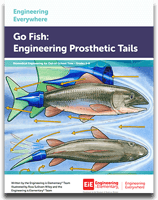 Engineering Everywhere (EE) is a free curriculum designed for youth in grades 6–8 in out-of-school time programs.
Engineering Everywhere (EE) is a free curriculum designed for youth in grades 6–8 in out-of-school time programs.
Kids and educators don’t need any particular background knowledge of science or engineering to use EE. All of our activities are designed to help children develop engineering skills, understand engineering practices, and develop positive attitudes about their ability to engineer.
Choose from 10 units and download a detailed lesson plan, materials list, and context-setting video. The majority of the materials needed for each unit are common household items or are easy to find in local stores, making EE a great addition to your Engineers Week festivities!
 EiE Unit Preview
EiE Unit PreviewThe Engineering is Elementary (EiE) curricula is designed for students in grades 1–5 in the classroom. EiE features 20 hands-on engineering design challenges. Choose the EiE units that complement the science topics you teach. You can use our units while completing your science unit or afterwards to allow students to apply their science knowledge.
Download a free unit preview to explore lesson plans, introductory material with background content, materials list, vocabulary lists, and more! For a deeper look at the Teacher Guides and how they are structured, check out this blog post.
You can also check out a quick overview of all 20 units.
 How-To Videos
How-To Videos Our How-To Videos help teachers with lesson prep. These segments show you exactly where to cut the holes in those shoeboxes that will become solar ovens, or how to create a model of the ocean floor. Just prop your tablet or laptop next to your box of classroom materials, press “play,” and follow along.
Our How-To Videos help teachers with lesson prep. These segments show you exactly where to cut the holes in those shoeboxes that will become solar ovens, or how to create a model of the ocean floor. Just prop your tablet or laptop next to your box of classroom materials, press “play,” and follow along.
Check out the handy tips and tricks that will help you save time, assemble models effectively, and be ready for hands-on classroom engineering. For more, explore the entire EiE video collection!
 Engineering Adventures
Engineering Adventures Engineering Adventures (EA) is a free curriculum created for kids in grades 3–5 in out-of-school time programs.
Engineering Adventures (EA) is a free curriculum created for kids in grades 3–5 in out-of-school time programs.
India and Jacob, a brother-sister duo, guide kids through seven unique units covering topics from earthquakes to rockets. Each unit includes two prep lessons designed to introduce children to the concepts of engineering and technology, as well as the Engineering Design Process.
Check out this blog post for more information on EA materials kits, and be sure to follow India and Jacob on Instagram!
 Ten Reasons to Love Engineering
Ten Reasons to Love EngineeringHappy Valentine’s Day! Check out this fun infographic from MathMovesU along with other great resources for teachers and parents.
 What the Research Says
What the Research Says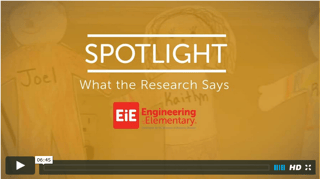 Improve your understanding of how engineering supports learning for elementary students and how EiE helps you address the NGSS in this short (6:45) Spotlight Video! We’ve already shared a resource that details why engineering education is beneficial, and this video illustrates the impact of EiE.
Improve your understanding of how engineering supports learning for elementary students and how EiE helps you address the NGSS in this short (6:45) Spotlight Video! We’ve already shared a resource that details why engineering education is beneficial, and this video illustrates the impact of EiE.
Read more about the research highlights in this PDF!
Interested in more research? Change The Equation offers “STEMtistics,” a by-the-numbers resource to help make the case for STEM learning and literacy. Check out CTEq’s STEMtistics on a variety of topics (from girls in STEM to jobs and the workforce to minorities in engineering, and more!) for research and data to guide the STEM conversation.
 Tower Power
Tower PowerIntroduce your students to engineering with the Tower Power prep lesson!
Using index cards and tape, your students will engage in a common engineering design challenge, describe the steps they use to solve the challenge, and become familiar with our five-step Engineering Design Process.
Watch a video of the lesson in action to see how it’s done! If your students have tried Tower Power before, change it up by using different materials.
 Snippets: Engineering Design Process
Snippets: Engineering Design Process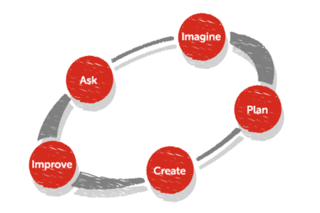 Our Snippets Library hosts a number of short videos that show young engineers in real elementary classrooms engaged in our age-appropriate, five-step Engineering Design Process: Ask, Imagine, Plan, Create, Improve.
Our Snippets Library hosts a number of short videos that show young engineers in real elementary classrooms engaged in our age-appropriate, five-step Engineering Design Process: Ask, Imagine, Plan, Create, Improve.
With 4-8 Snippets per step, these videos help educators visualize what forms each step can take in the classroom. Our Video Snippets are also great for use in presentations!
Interested in displaying EiE's Engineering Design Process in your classroom? Download and print a copy of our EDP poster!
 "Engineering Challenges Promote 21st-Century Skills"
"Engineering Challenges Promote 21st-Century Skills"To succeed in the global workplace, students need to develop 21st-century skills: creativity, collaboration, critical thinking, and communication. Engineering challenges promote these skills by engaging youth in meaningful, hands-on activities.
In addition to 21st-century skills, the EiE curricula builds science and math skills, classroom equity, career success, and global citizenship.
 Design Squad Global
Design Squad Global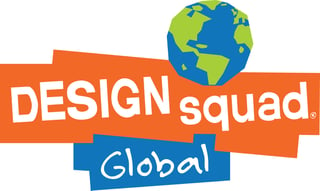 PBS Kids Design Squad Global offers lesson plans with engaging media to introduce kids to engineering. For Engineers Week, try the lesson on “Helping Others” to show your students that engineers make a world of difference!
PBS Kids Design Squad Global offers lesson plans with engaging media to introduce kids to engineering. For Engineers Week, try the lesson on “Helping Others” to show your students that engineers make a world of difference!
One of the many resources Design Squad offers parents, teachers, and educators is an online workshop to help you build your skills and confidence in guiding kids through engineering activities.
Students can check out the Design Squad website, an online community created for kids ages 8 and older that features creative activities, engaging videos, interactive games, and exciting contests.
 Snippets: Engineering Habits of Mind
Snippets: Engineering Habits of Mind Engineering habits of mind are positive strategies for problem solving that help define success not only in engineering but across the curriculum. We have identified 14 engineering habits of mind, including persistence, collaboration, and systems thinking.
Engineering habits of mind are positive strategies for problem solving that help define success not only in engineering but across the curriculum. We have identified 14 engineering habits of mind, including persistence, collaboration, and systems thinking.
These Video Snippets capture candid moments in elementary classrooms where students apply each of the 14 habits to engineering design challenges.
Read more about engineering habits of mind on our blog!
 The Engineering Design Process in Action
The Engineering Design Process in Action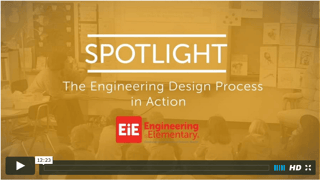 Learn more about the Engineering Design Process (EDP) in this Spotlight Video! Because EiE serves young children, we’ve created a simple EDP to guide students through our engineering design challenges. This EDP has five steps and uses terms children can understand: Ask, Imagine, Plan, Create, Improve.
Learn more about the Engineering Design Process (EDP) in this Spotlight Video! Because EiE serves young children, we’ve created a simple EDP to guide students through our engineering design challenges. This EDP has five steps and uses terms children can understand: Ask, Imagine, Plan, Create, Improve.
This video will help you learn effective strategies for guiding your students through each of the five steps.
To read more, check out the blog post that discusses this video!
 TryEngineering
TryEngineeringTryEngineering is a great resource for students and educators alike. With 126 free lesson plans available for download, teachers can find an engineering lesson to fit any age and interest. Younger students will enjoy “The Boat and the Beetle” while older students can learn about circuits and Boolean expressions.
Students can also explore the many fields of engineering and find opportunities to get involved in OST programs, competitions, and internships.
 "We Need Engineering Heroes"
"We Need Engineering Heroes" "Kids are more likely to dream of being sports stars and rock musicians than engineers. But without exciting role models, students are unlikely to pursue the field. To inspire the next generation of inventors, we need heroes who are engineers."
"Kids are more likely to dream of being sports stars and rock musicians than engineers. But without exciting role models, students are unlikely to pursue the field. To inspire the next generation of inventors, we need heroes who are engineers."
Museum of Science, Boston President, Ioannis Miaoulis, discusses how critical role models are for the future of engineering. Help your students find "engineering heroes," like astronaut Mark Watney!
Explore EngineerGirl's Directory of Women Engineers, where women engineers post information about what they do and answer questions for students. Be sure to check out the interviews and “Day in a Life” profiles for a deeper perspective on life as an engineer! For more, visit BeAnEngineer to meet engineering pioneers, innovators and explorers.
 NGSS Twitter Chat
NGSS Twitter ChatOur Video Snippets illuminate the science and engineering practices specified in the NGSS, showing what these practices look like when young students try them in real classrooms. For each of the eight NGSS practices, the collection features up to four short videos. Some show elementary students engaging in a practice; such as planning an investigation, analyzing data, or making an argument based on the evidence; while others show teachers using instructional strategies that guide students in the practices.
For more information about how the EiE curricula maps to national and state standards, check out this blog post. "Exploring the EiE Website to Enhance Engineering Curriculum"
"Exploring the EiE Website to Enhance Engineering Curriculum"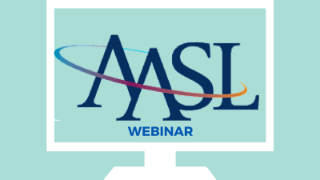 This live event is now over. Due to the high level of interest, AASL will be providing a free archived version of this webinar for the next 30 days. After 30 days, the webinar archive will only be available to AASL members and AASL eCollab susbscribers. Non-AASL members can gain access to this webinar archive, along with over 200 other archived AASL professional development resources, by joining AASL or subscribing to eCOLLAB. View the archive version now!
This live event is now over. Due to the high level of interest, AASL will be providing a free archived version of this webinar for the next 30 days. After 30 days, the webinar archive will only be available to AASL members and AASL eCollab susbscribers. Non-AASL members can gain access to this webinar archive, along with over 200 other archived AASL professional development resources, by joining AASL or subscribing to eCOLLAB. View the archive version now!
Join the American Association of School Librarians (AASL) and EiE professional development provider Nicole O’Neil today (5:00 p.m. Eastern | 4:00 p.m. Central | 3:00 p.m. Mountain | 2:00 p.m. Pacific) for a free webinar!
Nicole will introduce participants to the EiE curricula and lead an exploration of our website. Our site is full of educator resources for classroom instruction, including a video library, free downloadable out-of-school time engineering units, instructional apps, alignment to content standards, and much more!
If you're unable to participate, or would like to explore on your own, check out this blog post for key highlighted resources.
 What if Engineering Disappeared for a Day?
What if Engineering Disappeared for a Day?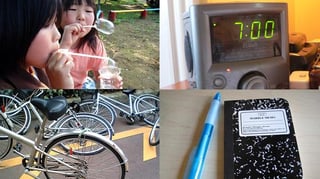 Are your students having trouble grasping the concept of engineering and how it impacts their daily lives? This 10-step slideshow from PBS Learning Media illuminates how a single school day would be affected if engineering were to disappear.
Are your students having trouble grasping the concept of engineering and how it impacts their daily lives? This 10-step slideshow from PBS Learning Media illuminates how a single school day would be affected if engineering were to disappear.
Many students (and some adults!) tend to associate "technology" with electronic items while overlooking simpler tech, such as toothbrushes. Use this slideshow to complement our prep lesson "Technology in a Bag" and get students thinking critically about their surroundings.
You can also explore our additional technology prep lessons!
 The Difference Between Science and Engineering
The Difference Between Science and Engineering Do you know the difference between science and engineering? This short (5:32) video touches on the major differences—and connections—in an elementary school classroom.
Do you know the difference between science and engineering? This short (5:32) video touches on the major differences—and connections—in an elementary school classroom.
Hear from a second-grade teacher whose students equivocate engineers to scientists, and watch as students explain their understanding of the two ("Scientists study stuff they discover, and engineers make stuff for people"). Plus, learn a few techniques that will help you integrate engineering literacy into your everyday teaching!
To read more, check out the blog post that takes a deeper look at this Spotlight Video.
© 2020 EiE | Museum of Science, Boston All Rights Reserved Terms & Conditions | Privacy Policy